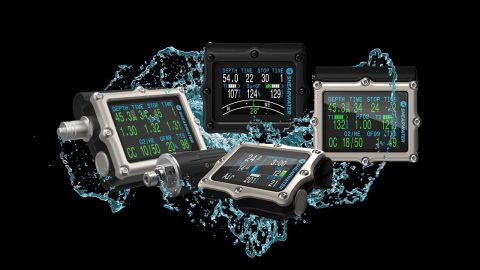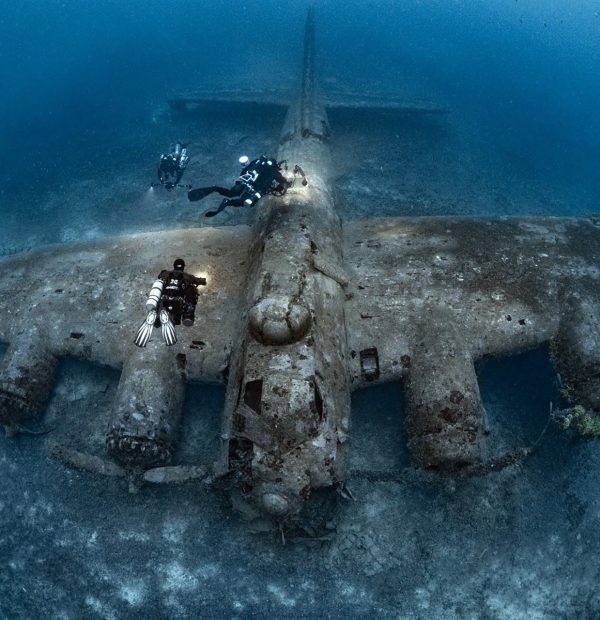Monday, 22 April 2024
Menu

Making use of good weather and excellent underwater conditions, a group of divers co-operating with Scapa Flow Museum in Orkney have created a fantastic photo-documentation of Royal Navy wrecks from the WWI era. They used advanced high-tech equipment so that the most famous wrecks could be shown in incredible details. The final result is breathtaking and will certainly impress any wreck diving aficionado.


HMS Hampshire, a British Devonshire-class armoured cruisers, was wonderfully portrayed by underwater photographers. Its shattered stern was brilliantly captured in the pictures and can finally be viewed not only by divers.
The ship sank on 5 June 1916 near Marwick Head, after running into a German mine placed by the submarine U-75. On board of the cruiser at the time was British Minister of War, Lord Horatio Kitchener, who perished along with nearly 750 sailors. HMS Hampshire sank rapidly, in just 15 minutes, and of those on board, only 12 were survived.
The face of the fallen minister later appeared on a propaganda poster calling on the British people to war. This poster is said to have made him as recognisable as King George V.
As the site of a huge tragedy, the wreck is extremely important to the Brits. A century later, the wreck, with the permission of the Ministry of Defence, was partially salvaged back to the surface and one of the propellers of the cruiser HMS Hampshire can now be seen on display at the Scapa Flow Museum.
Scapa Flow was a large natural harbour during both world wars. It was the home base of the British Royal Navy and the local waters are full of the history from those days. In order to commemorate the naval presence in Orkney, the museum decided to create detailed 3D models of the two sunken giants HMS Hampshire and HMS Vanguard. It was for this purpose that the detailed photographic and video documentation was taken.
The second of the wrecks divers took care of is the St Vincent-class dreadnought battleship HMS Vanguard. The ship sank on 9 July 1917 after a series of explosions occurred in the ammunition storage room. The vessel rapidly went down and as many as 843 of the 845 sailors on board died at the time. In 1984, the wreck was protected as a war grave and diving on it is prohibited.

Thanks to a licence from the Ministry of Defence, local divers from Huskyan Charters can regularly survey wrecks in the region of Scapa Flow. They then report the results of their work to government and administration representatives. Thanks to this partnership, legendary and important wrecks are periodically investigated, and the results of such work are, for example, the mentioned 3D models and excellent photographic and video documentation.
“The end result will be an improved digital resource for visitors to the museum and one which helps tell the story of Orkney’s role in the world wars as the UK’s key naval base – and the immense losses borne out here” – said Nick Hewitt, the Scapa Flow Museum’s Culture Team Manager.

Scapa Flow Museum, which is one of the five shortlisted as the UK’s best museums in 2023, recently signed a collaboration agreement with the National Museum of the Royal Navy. This collaboration has made it possible to carry out dives over wrecks protected as war graves.
“The study of wrecks is important in understanding the events around their loss, which are sometimes obscure,” said the national museum’s Director General Professor Dominic Tweddle,










Welcome to DIVERS24.COM, your daily source of scuba news, freediving, scuba diving information, and equipment reviews. Our comprehensive coverage of the dive industry from A to Z provides you with all the latest scuba news, training updates, underwater photography tips, and everything else related to scuba diving. Whether you’re a beginner or an experienced diver looking for more knowledge about scuba gear or techniques – we’ve got it covered! With our in-depth articles written by experienced divers who have been there and done that, you are sure to find exactly what you need here at Divers24.com. Dive into scuba news today!
Underwater Media Sp. z o.o.
Szafarnia 11/F8,
80-755 Gdansk, Poland
Welcome to DIVERS24.COM, your daily source of scuba news, freediving, and scuba diving information. Sign in for a weekly news update and discount coupons for dive gear and apparel.
@2023 - underwatermedia.pl. All Right Reserved. Designed and Developed by Tworzenie stron internetowych Gdansk

The Divers24 portal is currently the largest online medium treating diving in Poland. Since 2010 we have been providing interesting and important information from Poland and around the world on all forms of diving and related activities.
Contact us: info@divers24.com